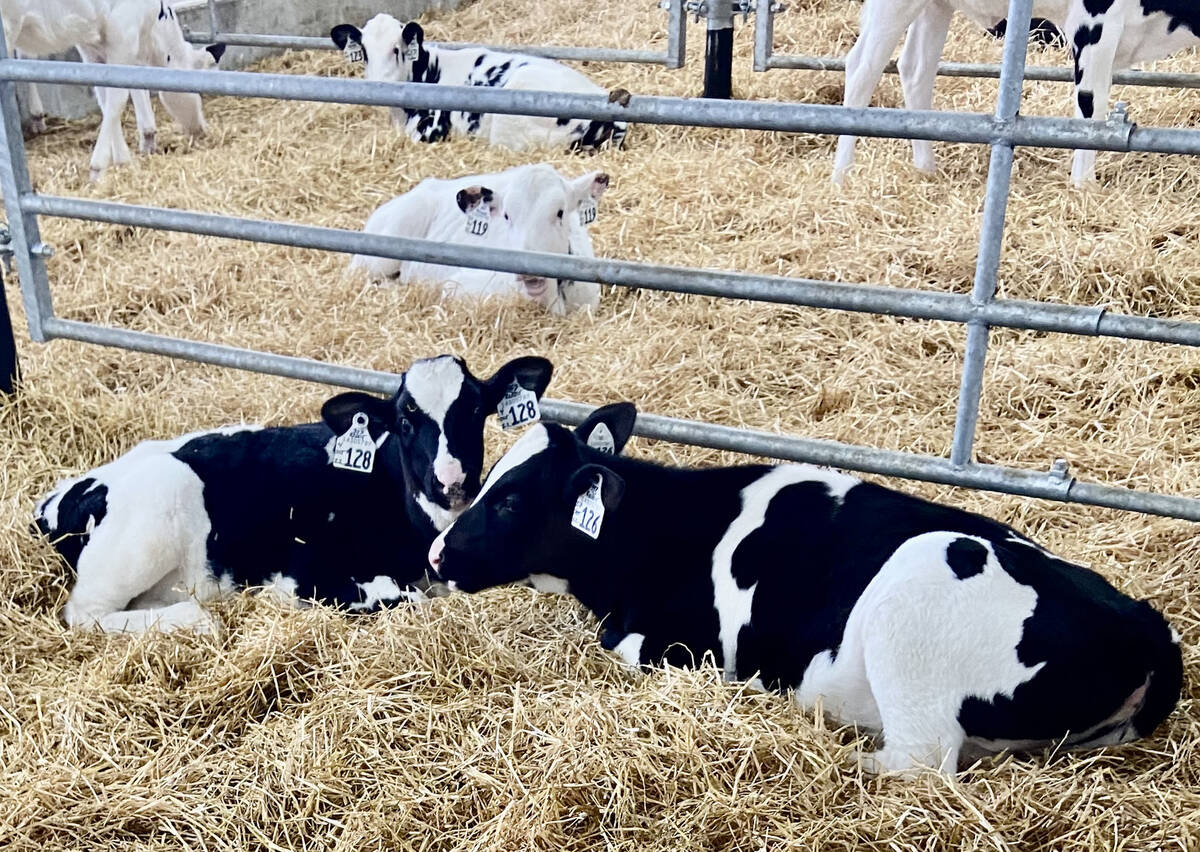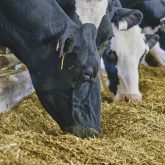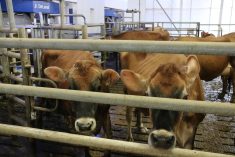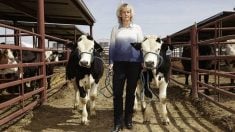During a session of the recent Shakespeare Swine Seminar, two southwestern Ontario veterinarians described how they put on their Sherlock Holmes deerstalker caps to get to the bottom of three recent cases of disease outbreaks rarely seen in pigs.
In the world of livestock health, a set of symptoms frequently points toward a common problem, but could also point to something more rare.
Why it matters: Porcine Reproductive and Respiratory Syndrome and African Swine Fever are top-of-mind these days but veterinarians and producers should stay alert for other, less-common pig diseases.
Read Also

Back to the drawing board for sexed semen fertility ratings
Lactanet, the national genetic evaluation and dairy data provider, goes back to the drawing board with its sexed semen fertility rating index prototype.
The case of severe windpipe infection
For Dr. Greg Dimmers, a veterinarian at Metzger Veterinary Services in Linwood, the mystery began with an email from a producer who was bringing in high-health genetics gilts to an isolation barn every seven weeks. He was housing them with to-be-culled sows and boars as a way to help them acclimatize to the naturally occurring bacteria they will encounter once they’re moved to the main barn. He stressed more than once how well this system can work in preventing disease, and how strictly this particular producer sticks to the recommended protocol.
But all was not right at the isolation barn. A large number of the gilts began coughing not long after arriving, Dimmer was told. And by the time they were to be transferred to the main barn, many were lame. Overall, cull rate had significantly increased.
His first thought was that it might be Glasser’s disease.
“This is a bug that definitely can lead to coughing, and it can lead to lame pigs.”
He prescribed an antibiotic for the water supply.
Some weeks later, the producer reported the problem persisted. Perplexed, Dimmer insisted on a farm visit.
“As some of you producers likely know, we vets love it when we can show up at a farm and cut open a (dead) pig to see what’s going on,” he said, before showing photos of the insides of a pig he dissected on the farm in question.
One photo showed the lungs, and they were entirely normal. The other, though, showed the pig’s trachea, an organ he wouldn’t normally cut open if he was thinking only about pigs. But he did so anyway because in cattle, which he also treats, tracheal infection is a common cause of respiratory distress.
“What I found was some pretty severe infection in the windpipe,” he said.
They switched to a more targeted antibiotic and the problem subsided. Dimmers noted he still has questions about why these particular gilts became susceptible to a type of infection that is rare among pigs. He has enlisted the help of three other vets from Ontario and Quebec to review the details and see if they can find anything he might have missed.
He also said the case provides proof that, even if a vet doesn’t know exactly what’s causing an ailment in the flock or herd, that doesn’t mean the symptoms, if correctly identified, can’t be effectively treated.
Two other recent examples of uncommon pig diseases were presented at the swine seminar session by Dr. Sue Burlatschenko of Goshen Ridge Veterinary Services in Tillsonburg.
The case of the stomach blood vessel lesions
One was a case of Hemagglutinating Encephalomyelitis Virus (HEV), which leads to vomiting, diarrhea and wasting, but also shares with post-weaning E. coli a particularly tell-tale sign: swollen foreheads and eyelids. It was the astute producer, Burlatschenko noted, who first noticed the forehead swelling, a fact that led Burlatschenko to move away from her initial diagnosis of respiratory disease. But she also felt certain it couldn’t be post-weaning E. coli, because the pigs on the farm would have been protected by the sow’s milk during nursing. So the mystery deepened.
It was eventually solved when testing revealed lesions in blood vessels surrounding the stomach, a symptom specific to HEV. The only other Ontario cases Burlatchenko could find references to were from 1962 and 2006. But in 2015, pigs at several agricultural fairs in the U.S. were discovered to be shedding HEV, and Goshen Ridge Veterinary Services has sent off samples from the infected farm to an American genetics bank so the two cases can be compared.
One cause for concern, Burlatschenko stressed, is the positive testing that first confirmed HEV in the Ontario farm was on the tonsils. Brain tissue from the farm tested negative.
“All the articles I’ve read said the virus gets into the respiratory system and then into the brain,” she commented. “That didn’t happen here, and that’s a curiosity. What I believe now is that this virus seems to be changing.”
And now, if she is called again to a case of nursery pigs falling behind in health, “I’m going to start looking for this HEV.”
The case of the problematic peat moss
The other unusual case described by Burlatschenko was a farrow-to-finish producer experiencing an unusually high number of condemnations at the abattoir for lymph node abscesses. Testing determined Mycobacterium avium, which she described as “a not uncommon” disease that generally shows no clinical signs in live pigs and is often carried by sparrows.
The mystery arose when it was revealed that two unrelated herds were having similar challenges. Investigation by Burlatschenko, as well as three other vets, eventually uncovered the common thread: all three were using peat moss as bedding material. And peat moss is a known host environment for Mycobacterium avium.













